Biography of Khosrow (Anoushirvan Dadgar)
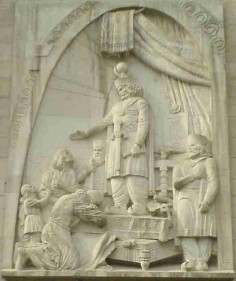
Khosrow I (a deficit) Anoushirvan Dadgar, (The emperor of Iran from the Sassanid dynasty) It was between 531 and 579 AD. a deficit Anoushirvan He was the most famous and greatest Sassanid king and one of the most influential kings of Iran throughout history.
During his time, many magnificent palaces, cities, trade routes, bridges and dams were built, some of which are still standing today..
During his reign, knowledge and art in Iran and the Sassanid Empire had reached their greatest glory. His imperial period along with the reign period of his grandson, Khosrow II (Khosrow Parviz) It is known as the second golden period of the Sasanian Empire.
Words “Deficit” which has become Arabic “Khosrow” and the Arabs generally used it for the kings of Iran, after the occupation of Iran by the Muslims, it was used in Iran itself to name the kings who had the name of Khosrow, including Khosrow Anushirvan..
The beginning of the reign of Khosrow I was the beginning of the most brilliant period of the Sasanian era. He suppressed the Mazdakians. He carried out efficient economic and tax reforms that made the king's treasury full of money and at the same time provided people's satisfaction. Khosrow reorganized and strengthened the army.
During his reign, he fought three wars with the Byzantine Empire, the first of which ended with Persian victories, culminating in the conquest of Antioch in 540 AD, and a temporary peace treaty in 545 AD.. Soon, a war broke out for the second time between the two great powers of the world at that time, and with the conclusion of peace negotiations in 561 AD, the war ended with the conclusion of a fifty-year peace agreement and Rome becoming a tributary to the Iranian Empire.. After the end of the Roman war, Khosrow overthrew the Heptalian government in 561-558 AD, which was shaken by the attack of a Turkish tribe led by Sinjibu..
The Jihun River was recognized as the border between Iran and the territory of the Turkish Khagan. This Khaqan soon became a more dangerous enemy for Iran than King Heptalian. Some Turkish tribes even appeared in the Caucasus, and Khosrow added to the fortifications of Darband Castle in order to prevent their attacks.. In the southern part, Khosrow expanded his power over Yemen. This country was in the hands of Abyssinians at that time. Vahriz, who was one of Khosrow's generals, collaborated with the Arabs and defeated the Abyssinians in 570 AD and was assigned to the government of Yemen by the emperor.. In these years, Sinjibu attacked Iran at the instigation of Byzantium, but Iran's border fortifications prevented his progress.. This event, as well as the disturbances in Armenia incited by the Roman government, caused the fire of war between Iran and Rome to flare up again..
Justinian, the Byzantine emperor, who thought that Khosrow was old and unable to manage the war, attacked Iran with the support of Christian Armenians and besieged the city of Nusaybin.. But Khosrow managed to defeat him with difficulty and by advancing into Byzantine territory, he occupied Dara Castle as well.. In the middle of the war, Tiberius became the emperor of Byzantium, and after a while, peace negotiations between the two powers began, but Khosrow died in 579 AD and did not see the outcome of the peace..
In the eastern traditions, Khosrow I is the first example of justice, and Arab and Iranian authors have narrated many stories describing his efforts to preserve justice.. Also, the great era of Iranian literary and philosophical civilization begins with the reign of Khosrow I. During his time, the book Kalilah and Demeneh was translated from Sanskrit into Sasanian Pahlavi, there was religious freedom for non-Zoroastrian religions, such as Christianity and Judaism.. Seven Greek philosophers took refuge in Tisophon and Khosrow's court as a result of the closure of the school of philosophy in Athens by the Byzantine emperor and the persecution they did to the sages..
From the restrictions that were placed on other non-Christian religions in the Roman state, it can be compared that the Iranian court had a high opinion and position regarding the freedom of religion.. During this period, the game of chess was also brought from India to Iran.
Tisophon, the capital of the imperial government of Iran, reached its limit during the reign of Khosrow I. Gandi Shapur Medical University enjoyed special prosperity during Khosrow's time and was considered the center of medical science in the world. The Nestorian Christians, who were rejected from Rome in the fifth century AD, became refugees in Iran, and the Hazaq doctors who were among them worked in Iran's medical schools, including Gandi Shapur..
Source : Christensen, pp. 248, pp. 249, pp. 297, pp. 307, pp. 304, pp. 275,P. 302
Anoushirvan State
During the reign of Khosrow Anushirvan, which is the most brilliant period of the Sasanian era, peace reigned in the country.. In the eastern traditions, Khosrow Anushirvan is an example of justice, chivalry and mercy, and Arab and Iranian authors have narrated many stories describing his zeal and efforts to preserve justice..
The most famous building built by the Sassanid kings is the palace, which is called Takht Kasri or Ivan Kasri, influenced by the Arabic dialect of the Muslim invaders, and its ruins are still surprising.. The building of this building has been attributed to Khosrow Anoushirvan. He arranged the tribute of the king and the collection of the army, and he found the inventory book. The book of Kalila and Demeneh were brought from India to Iran during his reign.
The great era of Iranian literary and philosophical civilization begins with the reign of Khosrow Anushirvan. Iran became so great during the time of Anushirvan that it died even from the reign of the great Shahpuran, and the development of literature and spiritual education gave this era a special quality..
………….
Suppression of Mazdakians and promotion of Zoroastrian religion
Even though the murder of Mazdak's followers took place at the end of Qabad's reign, the main cause of this event was Khosrow Anushirvan, whose followers had threatened his crown, and it is natural that he took measures to suppress the remnants of Mazdak's followers at the beginning of his reign. be serious and severe.
The suppression of Mazdakians greatly elevated the religion of Zoroastrianism and the clerical class. In these days, in order to deal with Christian and Byzantine provocations and to prevent heresies that could shake the foundation of the monarchy, the existence of a national ritual seemed necessary..
In general, until the reign of Khosrow Anushirvan, the history of the Sassanids consisted of trying to strengthen the national religion in order to fight against divisive non-national religions, or tolerance towards such religions in order to resist the influence of the class in whose hands the national religion became a means to gain power and Exercising influence in government affairs.
Shahpur II and Khosrow Anushirvan were the ones who promoted Zoroastrian religion with strength and intensity in order to ensure the unity of the country and to fight against the opposing factors.. What further established Khosrow Anushirvan's action was his success in collecting the Avesta.
Source : Zarin Kob, p. 487
…………….
Anushirvan's policy towards Christians
What emerges from the events is that Anushirvan had a political opinion about the Christian religion, that is, he was not fundamentally against this religion, but because he considered the Christians to be the tools of the Romans, he was suspicious and cautious towards them..
Anushirvan helped the Christians who were expelled from Rome and took refuge in his court and accepted seven Alexandrian philosophers in his court and was kind to them.. The Nestorians, who from the point of view of the Christians, at that time were considered a false sect and were persecuted and had taken refuge in the court of Iran, were noticed by Anushirvan, so that their churches were called Iranian churches in the history of Christianity..
The Nestorians took advantage of this situation and showed surprising seriousness in spreading the Christian religion. During Anushirvan's time, their churches were established in Herat and Samarkand, and in later times, their missionaries went to China and India..
In the early days of Anushirvan's reign, his son Anoushezad rebelled against his father, but he was soon caught and blinded in Jund Shapur.. They wrote that Anoushezad was a Christian and Christians supported him. On this occasion, many Christians were caught and punished around this incident.
Source : Pirnia, p. 339
…………………
Military organization during Anushirvan era
During the Sassanid period, most of the positions, including military bases and ranks, were hereditary. The Commander-in-Chief of Iran's Armed Forces until the 6th century (Sepahbaz Iran) This position was canceled by Anushirvan. Anoushirvan divided Iran into four parts, and at the head of each of these parts was a general (Sepahbaz, commander of the army) put separately. Because the concentration of military power in the hands of a commander could lead to the acquisition of great power and greed in the throne and putting pressure on the emperor.. The division of the areas under the influence of each spehbad was as follows:
Eastern Command of the Khorasan, Saxistan, and Kerman forces.
South Commander of Pars and Khuzestan forces.
Maghrib commander of the Iraqi army to the border of the Byzantine government.
The commander of the North had under his command the armies of the Great Medes and Azerbaijan.
Espahbdan were considered important officials of the government and each of them had authority in their own territory and ruled over a quarter of the country and had a deputy at their disposal, known as Marzban.. The border guards were the rulers of the states. Also, Yaqoubi mentioned that every spehbad (army commander)He had a shepherd under his command.
Source : Kristen Sen, p. 394 and P. 542
…………….
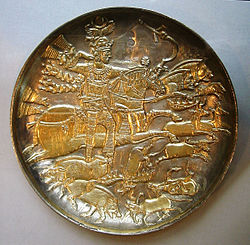
Khosrow Anushirvan sitting on the throne


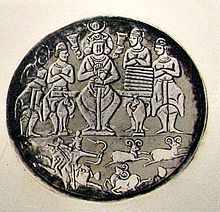

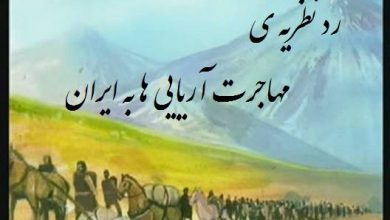
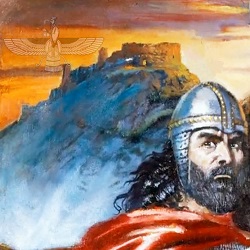
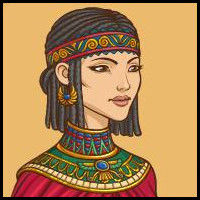
I am not proud of Cyrus and the kings of Iran, I wish I had no Iranian roots, African or red-skinned, I hate Iranians better than Iranian history.
It looks like you are under 10 years old
Thank you and many greetings